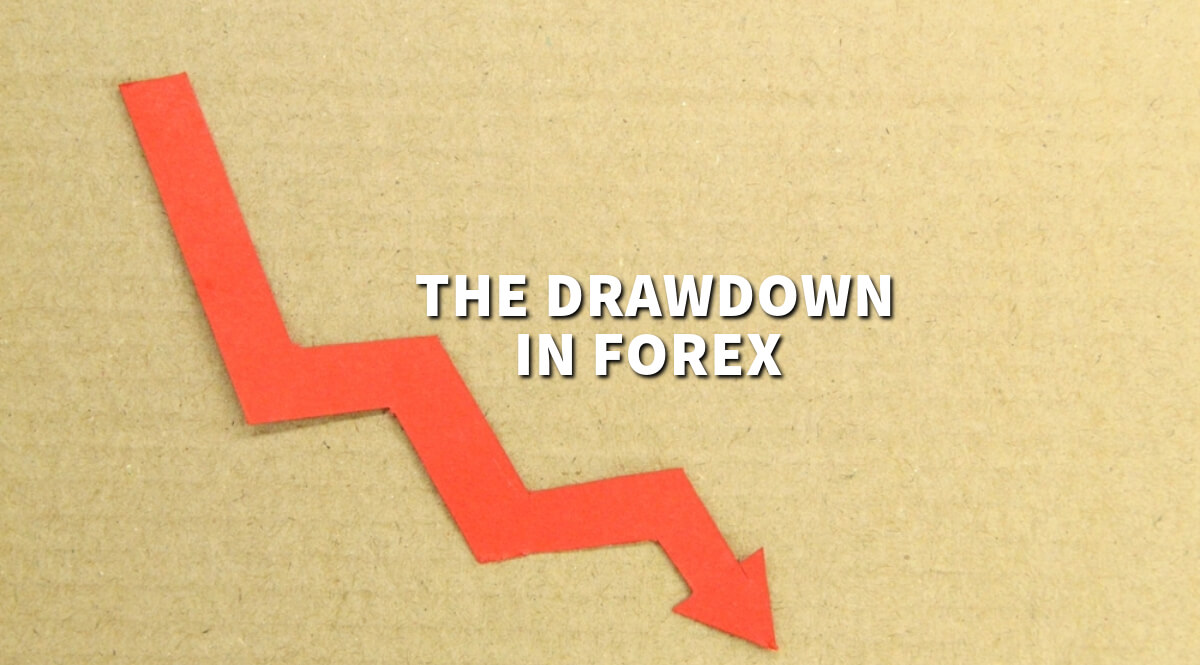What Is The Drawdown In Forex?
Foreign exchange (Forex) trading is buying and selling currencies to profit from fluctuations in exchange rates. It is worth noting that the Forex market is the world’s largest and most liquid financial market. There are numerous questions regarding Forex, such as, “What is the drawdown in Forex?”
As stated earlier, the Forex market is the world’s largest and most liquid financial market. Just imagine, the Forex market operates 24 hours a day, five days a week, allowing continuous currency trading across different time zones. As opposed to centralized markets, it is decentralized through a global network of banks, brokers, and financial institutions.
What’s important, currencies such as EUR/USD (Euro/US Dollar) or GBP/JPY (British Pound/Japanese Yen) are traded in pairs. When trading, you buy one currency while selling another, aiming to profit from changes in exchange rates. Numerous factors have the potential to affect the currency pairs, including economic data and geopolitical events.
Retail traders, multinational corporations and financial institutions participate in the Forex market. Let’s not forget about governments.
Notably, retail traders usually use online platforms provided by brokers to access the market. They often utilize leverage to control larger positions with relatively little capital.
The Forex market offers significant profit opportunities but also carries high risks due to its volatility and the use of leverage. So, it is important to take this into consideration when it comes to the world’s largest financial market.
Drawdown in Forex
Let’s return to the main topic, which is Drawdown in Forex. It refers to the reduction in the equity of a trading account from its peak value to its lowest point over a specific period. To cut a long story short, it represents the loss a trader experiences before the account recovers to reach a new high.
In the case of Forex trading, it refers to the reduction in equity from a peak to a trough during a specific period. It measures the decline in the value of an investment, typically expressed as a percentage. Without a doubt, it is an important risk indicator. Analysts and traders utilize it to measure the performance of trading strategies.
It is no secret that in Forex trading, traders encounter several types of drawdowns on a regular basis:
Equity: Equity drawdown measures the decline in the account balance from its highest point to the lowest point, expressed as a percentage. Importantly, this metric is vital for assessing the risk associated with a trading strategy or system.
Maximum: It is the largest percentage decline in the account balance from its peak to the subsequent trough. This metric is invaluable, as it allows traders to understand the worst-case scenario they may face while trading.
Relative: Interestingly, it is the difference between the initial deposit size and the maximum loss (whether temporary or permanent) experienced during the entire trading period.
Its role in Forex Trading
Risk management: Understanding drawdown is essential for effective risk management. It enables traders to set appropriate stop-loss levels and position sizes, which helps limit potential losses.
Strategy evaluation: It serves as a crucial metric for evaluating the performance of a trading strategy. While a strategy may offer high returns, significant drawdowns might indicate higher risk than those with moderate returns and lower drawdowns.
Psychological impact: Large drawdowns can be psychologically taxing for traders, often leading to emotional decision-making that may not be beneficial. Being aware of potential drawdowns helps traders mentally prepare for such situations.
Important factors
Several factors can affect the extent of drawdown in Forex trading:
One of them is Leverage. It is no secret that Forex trading commonly involves leverage, which can amplify gains and losses. As a reminder, higher leverage can result in larger drawdowns.
Let’s not forget about volatility. The currency markets are highly volatile, to say the least. Unsurprisingly, sudden market movements can lead to substantial drawdowns.
Besides, the type of trading strategy used—scalping, day trading, or swing trading—affects the drawdown. Moreover, individual risk tolerance plays an important role. For example, traders with a higher risk tolerance may accept larger drawdowns for higher returns.
How to mitigate
Traders have the opportunity to use several strategies in order to improve the situation:
Diversification: Spreading investments across various currency pairs or asset classes can significantly reduce risk.
Leverage: Utilizing leverage carefully and avoiding over-leveraging can help to deal with challenges. Lower leverage reduces the risk of big losses.
Risk management tools: Using tools such as stop-loss orders, take-profit levels, and trailing stops is strongly recommended to limit losses and protect gains.
Consistent strategy review: Regularly reviewing and adjusting trading strategies based on current market conditions and performance metrics can effectively manage drawdown.
Acceptable level
Selecting a trading strategy often relies on the acceptable level of drawdown. Notably, relative drawdown is a more widespread type of absolute drawdown.
Based on the permissible level of relative drawdown, trading strategies can be classified into the following categories:
Low-risk
Conservative strategies involve minimal risk tolerance and aim for slow but steady income. These strategies typically allow a drawdown of no more than 15%. An ideal target is even lower, no more than 10%.
Balanced
Balanced strategies are the most popular. Interestingly, they strike a middle ground between risk and return, performing well with drawdowns ranging from 20% to 35%.
High-risk
High-risk strategies involve trading with high leverage, leading to a higher level of risk. These strategies can accept drawdowns of up to 50%. In certain cases, where the Martingale strategy is utilized, drawdowns can reach up to 70%.
To sum up. Drawdown in Forex plays an important role. By understanding and managing drawdown, traders can make well-informed decisions, enhance their risk management practices, and improve their overall trading performance. Whether you are a novice or an experienced trader, monitoring drawdown is vital for long-term success in the Forex market.
The post What Is The Drawdown In Forex? appeared first on FinanceBrokerage.






























